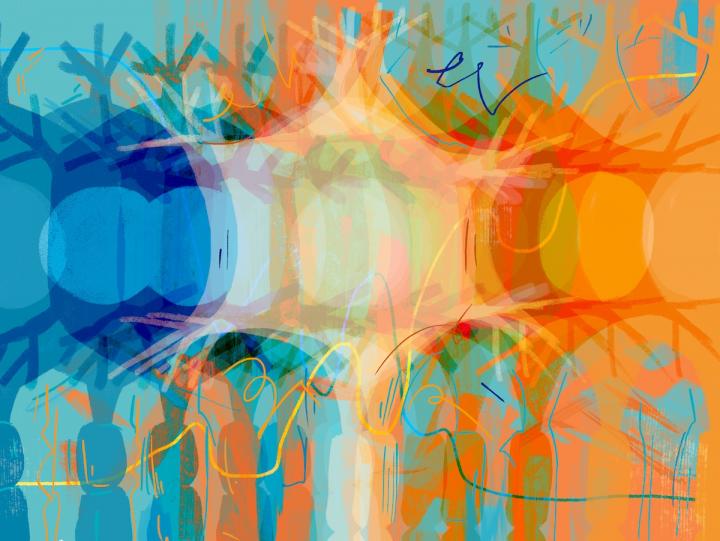Kyoto University identifies ‘wake-up’ signal for deep-sleeping neural stem cells

Credit: Kyoto University/Robin Hoshino
Kyoto, Japan — The human body has powerful healing abilities. But treating brain disorders is no easy task, as brain cells — neurons — have limited ability to regenerate. Nonetheless, stem cells are a form of natural backup, a vestige of our days as still-developing embryos.
The difficulty is that, as we age, our brains’ stem cells ‘fall asleep’ and become harder to wake up when repairs are needed. Despite efforts to harness these cells to treat neurological damage, scientists have until recently been unsuccessful in decoding the underlying ‘sleep’ mechanism.
Now, researchers at Kyoto University studying brain chemistry in mice have revealed the ebb and flow of gene expression that may wake neural stem cells from their slumber. These findings, which may also apply to stem cells elsewhere in the body, were recently published in the journal Genes & Development.
“No one before us has directly compared active stem cells in embryos with inactive, ‘quiescent’ adult stem cells,” says group leader Ryoichiro Kageyama of Kyoto University’s Institute for Frontier Life and Medical Sciences, who points out that at least two genes and their associated proteins regulating activation had already been identified.
The team focused their attention on protein ‘Hes1’, which is strongly expressed in the adult cells. This normally suppresses the production of other proteins such as ‘Ascl1’, small amounts of which are periodically produced by active stem cells.
Monitoring the production of the two proteins over time, the team pinpointed a wave-like pattern that leads to stem cells waking up and turning into neurons in the brain.
When they ‘knocked out’ the genetic code needed to make Hes1, the cells started to make more Ascl1, which then activated almost all the neural stem cells.
“It is key that the same genes are responsible for both the active and quiescent states of these stem cells,” Kageyama adds. “Only the expression dynamics differ between the two.”
“A better understanding of the regulatory mechanisms of these different expression dynamics could allow us to switch the dormant cells on as part of a treatment for a range of neurological disorders.”
###
The paper “High Hes1 expression and resultant Ascl1 suppression regulate quiescent vs. active neural stem cells in the adult mouse brain” appeared on 13 March 2019 in Genes & Development, with doi: 10.1101/gad.323196.118
About Kyoto University
Kyoto University is one of Japan and Asia’s premier research institutions, founded in 1897 and responsible for producing numerous Nobel laureates and winners of other prestigious international prizes. A broad curriculum across the arts and sciences at both undergraduate and graduate levels is complemented by numerous research centers, as well as facilities and offices around Japan and the world. For more information please see: http://www.
Credit: Nano Pico Science
Media Contact
Raymond Kunikane Terhune
[email protected]
Related Journal Article
http://dx.




